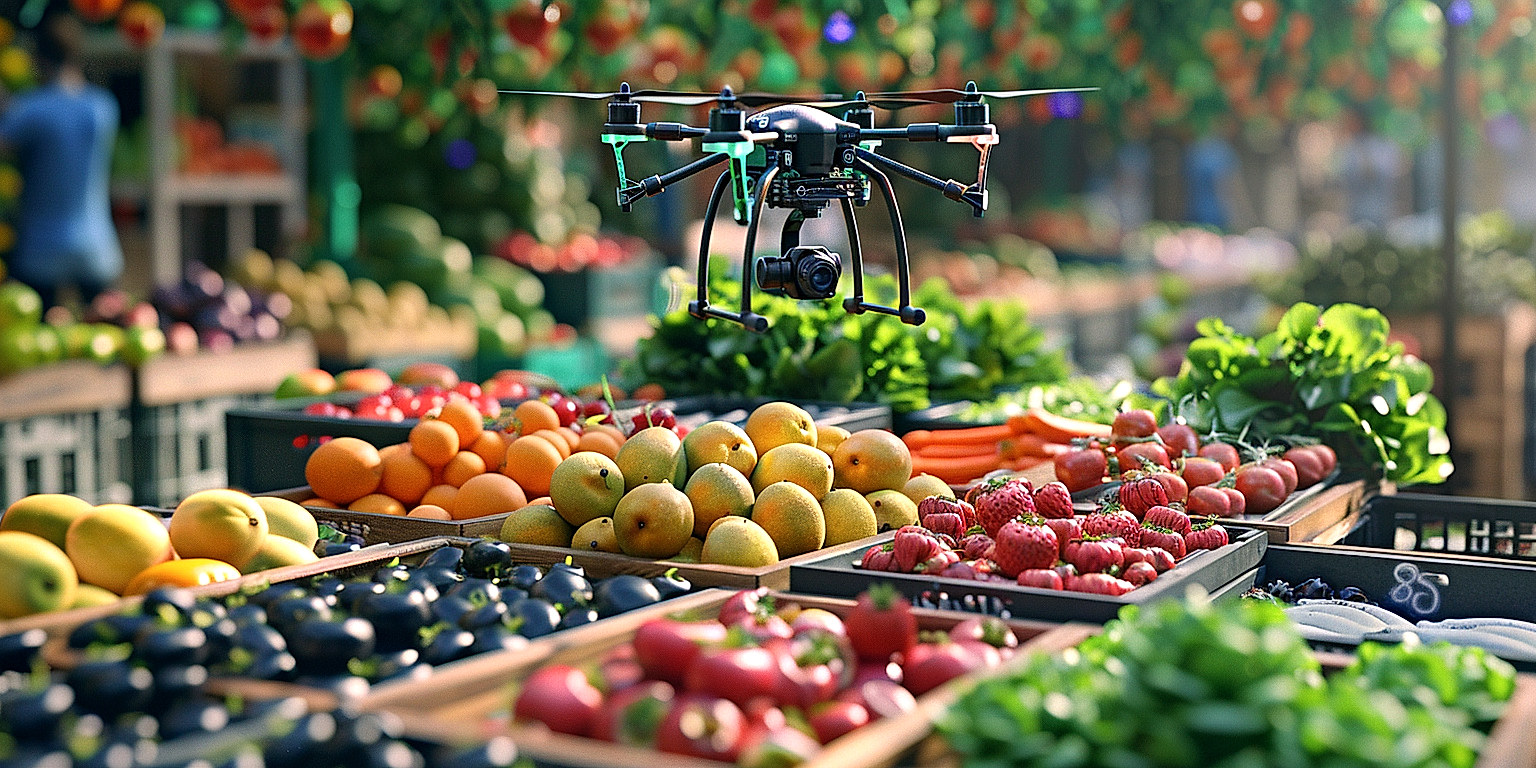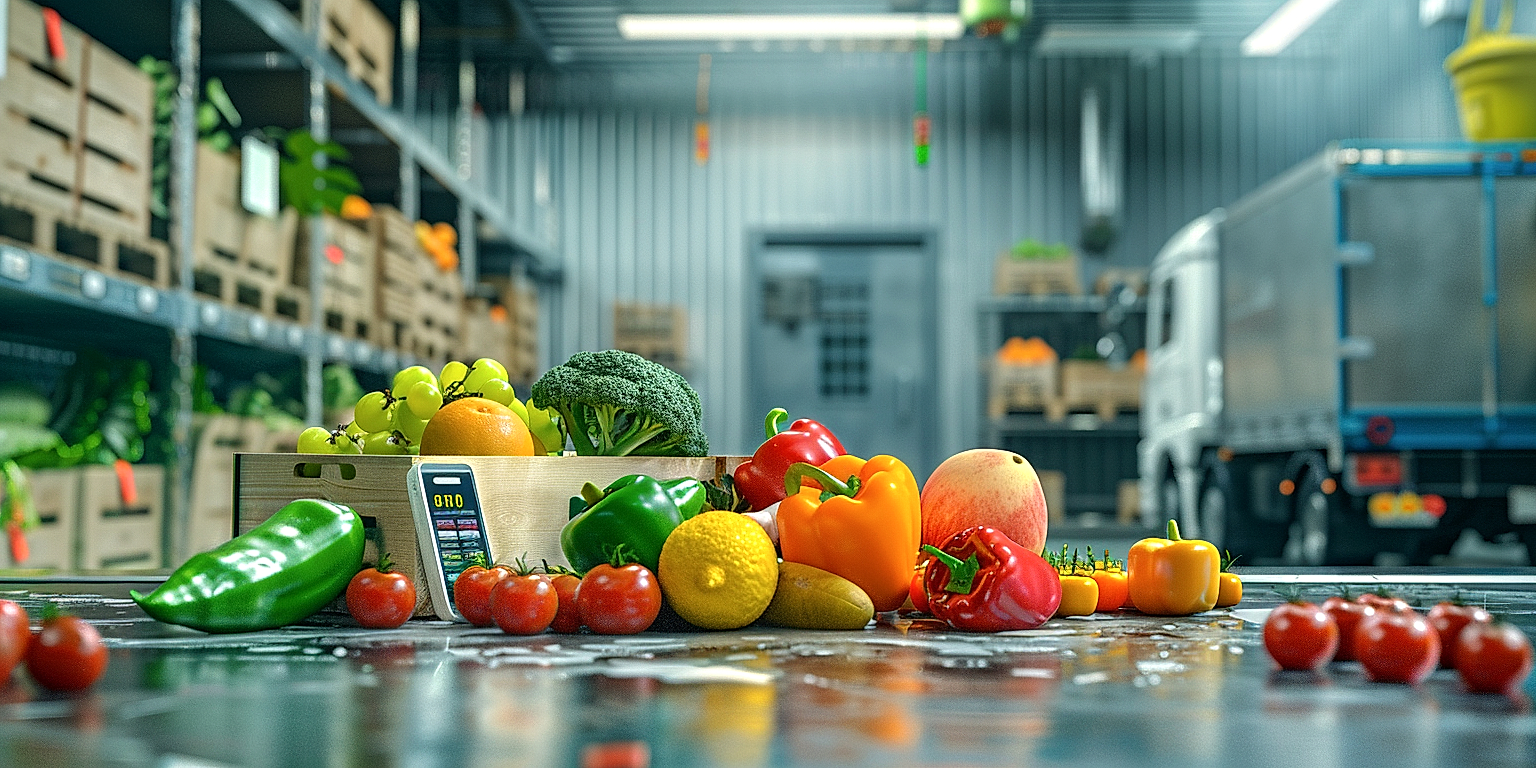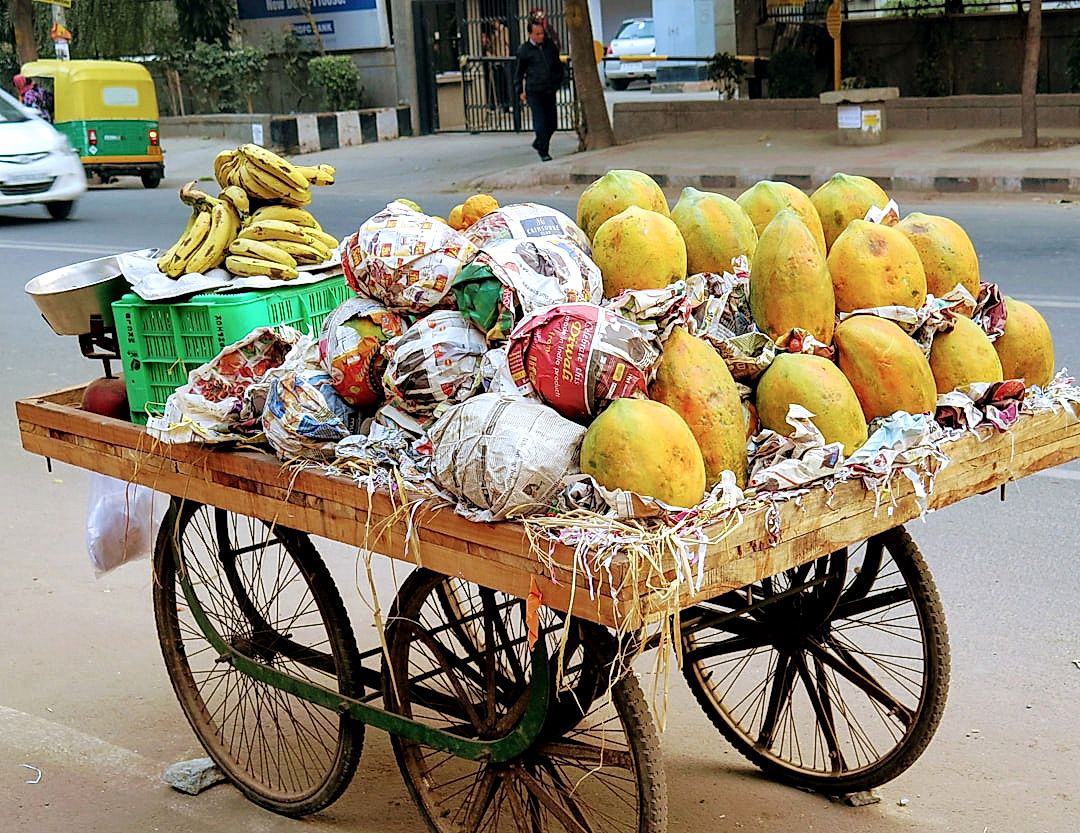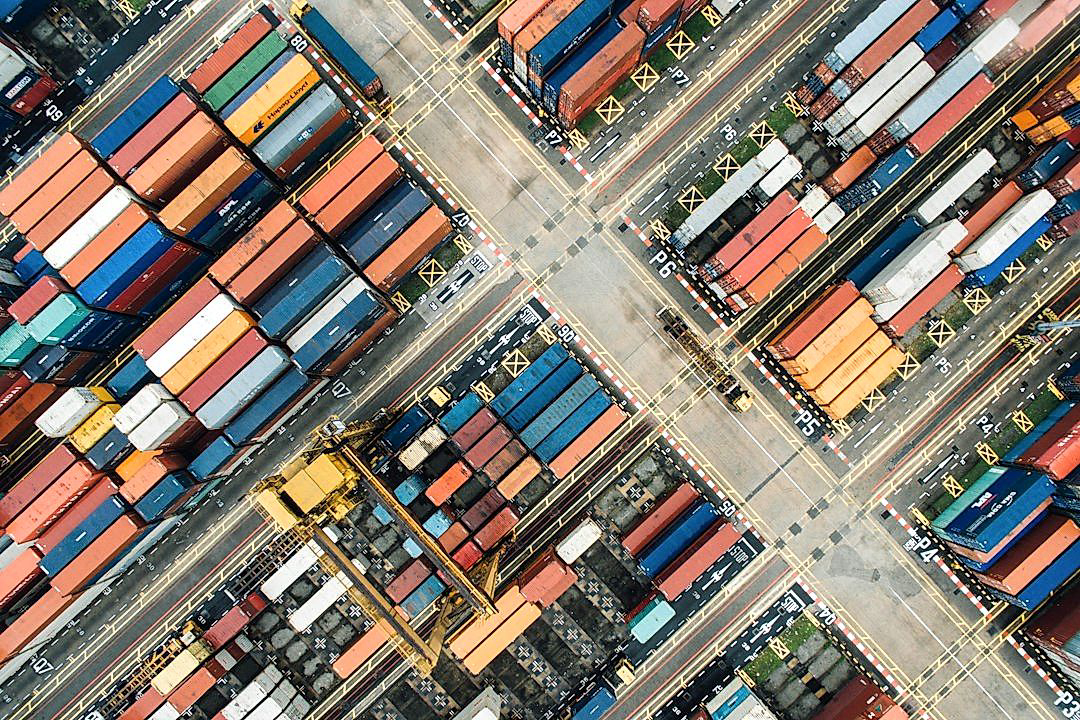Efficiency is at the heart of successful produce shipping processes.
In an industry that hinges on the freshness and quality of perishable commodities, time is an inescapable concern.
Therefore, innovative strategies and technologies are critically important.
Numerous recent advancements are transforming the conventional logistics of this sector.
These advances are accelerating processes, reducing waste and ensuring products arrive in peak condition.
Let’s explore some of these breakthroughs and their role in revamping the industry.
Innovations Boosting Efficiency In Produce Shipping
1. Advanced GPS Tracking for Live Shipment Updates
In production and shipping logistics, the innovation of advanced GPS tracking technology has significantly enhanced efficiency by providing live shipment updates.
This level of transparency allows for an unprecedented magnitude of operational control, leading to process optimization and improved customer satisfaction.
The essence of this technology lies in its ability to provide real-time data and precise tracking of shipments, ensuring accurate and timely information about the whereabouts of goods in transit.
Integration of GPS technology with advanced software platforms offers a complete visual overview of the shipping and delivery process.
One key aspect that makes GPS tracking critical in improving efficiency is its ability to mitigate potential shipping complications through live updates.
The ability of a shipping entity to proactively respond to incidents such as traffic disruptions, asset breakdowns, or rerouting requirements is central to this operational efficiency.
With GPS trackers, shipping personnel can monitor vehicular speed, direction, and exact location in real-time, expediting decision-making processes in case of unexpected scenarios.
In the agricultural industry, for instance, the need for swift, efficient, and quality produce shipping cannot be overstated.
Advanced GPS tracking ensures that the produce reaches the market on time and in good condition, which is vital for maintaining the value of perishable goods.
Through this technology, clients have the ability to track their orders, ensuring they have accurate delivery estimates, and can therefore plan accordingly.
This level of involvement drastically improves the customer experience, a significant factor contributing to business growth.
Such transparency builds trust between the customer and the shipping entity, ultimately strengthening business relationships through improved customer loyalty.
The cost-effectiveness and accessibility of GPS technology make it a practical solution for businesses of all sizes.
Through its scalability, it can cater to the needs of both small farm-based businesses, as well as large-scale commercial exporters.
Firms that leverage this technology are bound to experience improved shipping efficiency, which eventually translates into increased business profitability.
Ultimately, the incorporation of advanced GPS technology in produce shipping operations is a significant stride towards achieving optimal shipping efficiency while enhancing the overall supply chain logistics.
2. Automation in Sorting and Packaging Processes
The introduction of automation into the packaging and sorting processes is a crucial breakthrough in boosting efficiency in produce shipping.
Advanced machinery and software are in place to ensure precision and repeatable quality in these processes.
Produce, such as fruits and vegetables, are now sorted and packed massively at incredibly high speeds without human intervention.
Food is sorted based on its weight, color, size, and other characteristics, depending on the design of the automated system.
Therefore, automation provides a safer and more hygienic method of handling produce, significantly decreasing the chances of food contamination.
This technology, in turn, promotes a more reliable and faster method of processing shipments, thus boosting productivity and efficiency.
Automated sorting also helps in reducing the amount of wasted produce during processing since machines can more accurately sort based on quality and ripeness.
Automation in the packaging process has dramatically reduced labor costs as fewer human workers are needed in the assembly lines.
Furthermore, automation technologies significantly lessen the likelihood of errors and accidents that can occur in manual processes.
A highly efficient automated system can consistently work 24/7 without breaks, unlike human labor, thereby accelerating production times.
These automated systems are equipped with advanced sensors and multiline scanning capabilities, ensuring high precision and accuracy in sorting and packaging.
Through machine learning algorithms, these systems can improve their functionality over time to ensure greater precision in the sorting process.
Produce sorting involves categorizing goods into different quality grades, which can be done more precisely with automated systems, eliminating subjectivity and contributing to consistent product quality.
In contrast, packaging automation allows for a more rapid packaging process while maintaining the quality of the package, thereby ensuring the freshness of the produce.
The future of produce shipping clearly lies in the continued adoption of automation technologies to further enhance efficiency and optimization of packaging and sorting procedures.
3. Deployment of Drones for Last-mile Deliveries
Among the exciting innovations boosting efficiency in produce shipping, the deployment of drones for last-mile deliveries stands out.
This technological advancement has the potential to revolutionize the entire logistics process, offering a myriad of benefits.
For starters, drones can vastly improve the speed of deliveries by avoiding issues like traffic and bad road conditions.
They can also reach remote areas that are difficult to access via traditional transportation modes, thereby enabling better coverage of delivery areas.
The usage of drones in produce shipping allows for fast, flexible, and immediate delivery, overcoming many hurdles that are usually encountered in traditional delivery methods.
Another major benefit is the reduction in greenhouse gas emissions, as drones are typically electric and produce less pollution than vehicles.
Furthermore, drones can accommodate a reasonable amount of load, making them a viable alternative for smaller, frequent deliveries that are common in the produce industry.
Companies are now recognizing the untapped potential of drones and are investing heavily in drone technology to enhance their last-mile delivery processes.
This shift towards drone deliveries has also been propelled by improvements in regulatory frameworks and customer acceptance.
Despite these advantages, a few challenges remain in the large-scale deployment of drones in produce shipping, primarily concerning safety, privacy, and regulatory issues.
Critical challenges include the need for safe navigation in various weather conditions and during night-time deliveries, controlling drone traffic, and ensuring the security of the goods being transported.
Moreover, there are still some privacy concerns and regulatory constraints to be addressed before drones can become a common method of produce delivery.
Nevertheless, as technology progresses and more companies begin to incorporate drones into their logistics strategy, we can expect these challenges to be addressed and the potential of drones to be fully realized.
Indeed, in the coming years, we can envisage a future where drone deliveries are a common sight, demonstrating that the world of produce shipping is set to become more efficient, greener, and innovative.
With their potential for dealing with traffic congestion, reducing delivery times, and minimizing carbon emissions, drones are poised to significantly improve the efficiency of last-mile deliveries in the produce industry.
4. IoT-based Temperature and Humidity Monitoring
One of the most potential-laden technological advancements in produce shipping is the application of the Internet of Things (IoT) in monitoring temperature and humidity throughout the entire process.
The IoT is a network of interconnected devices and sensors that can communicate with each other to exchange data and make autonomous decisions.
The growing sophistication of these IoT technologies allows for the remote monitoring of produce during transit, which is crucial in maintaining the quality and freshness of the produce.
For temperature-sensitive products, like fruits and vegetables, maintaining an optimal temperature is vital.
Any significant fluctuation in temperature could lead to premature ripening, decay, or general spoilage of the goods, resulting in major losses.
Developed IoT sensors can collect and send vital data such as temperature, humidity, and atmospheric conditions in real-time , allowing shippers to take immediate action as necessary.
The application of IoT technologies in produce shipping does not only guarantee the integrity of the goods, but also leads to substantial cost savings by reducing product waste.
Moreover, these IoT sensors can be incorporated into packaging, pallets, or even individual produce items to provide the most accurate and specific data .
Such specificity of data enables a better level of control and ensures the delivery of high-quality produce at the right temperature and humidity .
Another perk of using IoT-based temperature and humidity monitoring systems in produce shipping is their ability to predict potential issues before they happen.
This predictive capability can protect the producer from major losses by alerting about any upcoming fluctuations in the conditions that might affect the produce.
The usage of IoT technologies is also making it possible to establish temperature and humidity thresholds . When these thresholds are breached, alerts are sent out to the appropriate personnel to take corrective action.
The widespread use and development of IoT in produce shipping is reaffirming its role as a crucial factor in ensuring the delivery of high-quality products to consumers.
With the continuous advancement in technology, it is likely that IoT-based temperature and humidity monitoring strategies would be more integrated within the produce shipping environment, thereby further boosting its efficiency.
5. AI-powered Predictive Analytics for Logistics.
Artificial Intelligence (AI) is gradually being integrated into various sectors, including logistics, where it is expected to revolutionize operations significantly.
The integration of AI in logistics is paving the way for predictive analytics, a game-changer in managing the supply chain.
This innovation serves to establish accurate forecasting that assists companies in making informed decisions regarding their shipping processes.
Predictive analytics employs advanced algorithms and machine learning to analyse past and present data, predicting potential future outcomes.
This predictive feature aids in estimating the demand and supply of products traditionally hard to measure, consequently boosting efficiency in produce shipping.
By leveraging machine learning algorithms, predictive analytics can accurately forecast future demand and hence, optimize inventory levels, reducing overstock and stock-outs, thus enhancing profitability and customer satisfaction.
Furthermore, AI-powered predictive analytics extends its benefits by accurately predicting delivery schedules and routes, leading to reduced fuel costs and faster delivery times.
This technology could also help in determining the most appropriate time to perform maintenance on shipping vehicles, therefore minimizing unplanned downtime.
By analyzing traffic patterns, weather conditions, and historical data, AI can predict potential delays and suggest possible alternative routes, reducing late deliveries and increasing customer satisfaction.
The timely identification of potential risks isn’t just beneficial for punctual deliveries, but it also minimizes unnecessary expenses for produce shipping companies.
Consistently accurate forecasting, driven by AI analytics, can actively aid operators in adapting their operations to accommodate changing factors such as regulations, competition or consumer behaviour.
Moreover, the use of AI in predictive analytics offers significant insights for logistics providers to improve their overall supply chain management, from procurement to customer delivery.
Predictive analytics also provides a platform for experiment and advancement – the more data it’s fed, the better its algorithms will become at predicting patterns and behaviors, therefore making it a continuously improving tool for logistics.
This AI technology not only increases efficiency but also reduces the possibility of human error in logistics, allowing for a smooth, streamlined process that can react quickly to ever-changing client demands.
As produce shipping continues to face a myriad of challenges, the integration of AI-powered predictive analytics offers a bright beacon of technology-driven solutions poised to revolutionize this industry.
To sum up, the possibilities that AI-driven predictive analytics brings to the table for logistics providers are tremendous and far-reaching, and its impact on optimizing efficiency in produce shipping cannot be underestimated.
The Bottom Line
The advent of advanced technology has revolutionized the logistics industry.
From real-time GPS tracking providing live updates of shipments, automation bringing precision and efficiency in sorting and packaging operations, to drones taking over last-mile deliveries, the impacts are most visible and beneficial.
Further, IoT-based monitoring systems ensure the perfect environment for sensitive goods while AI-powered analytics make logistics smarter and more predictable.
Overall, these technological advancements are not just raising operational efficiency but also significantly improving customer satisfaction – setting the stage for a more innovative and reliable future in the logistics sector.




